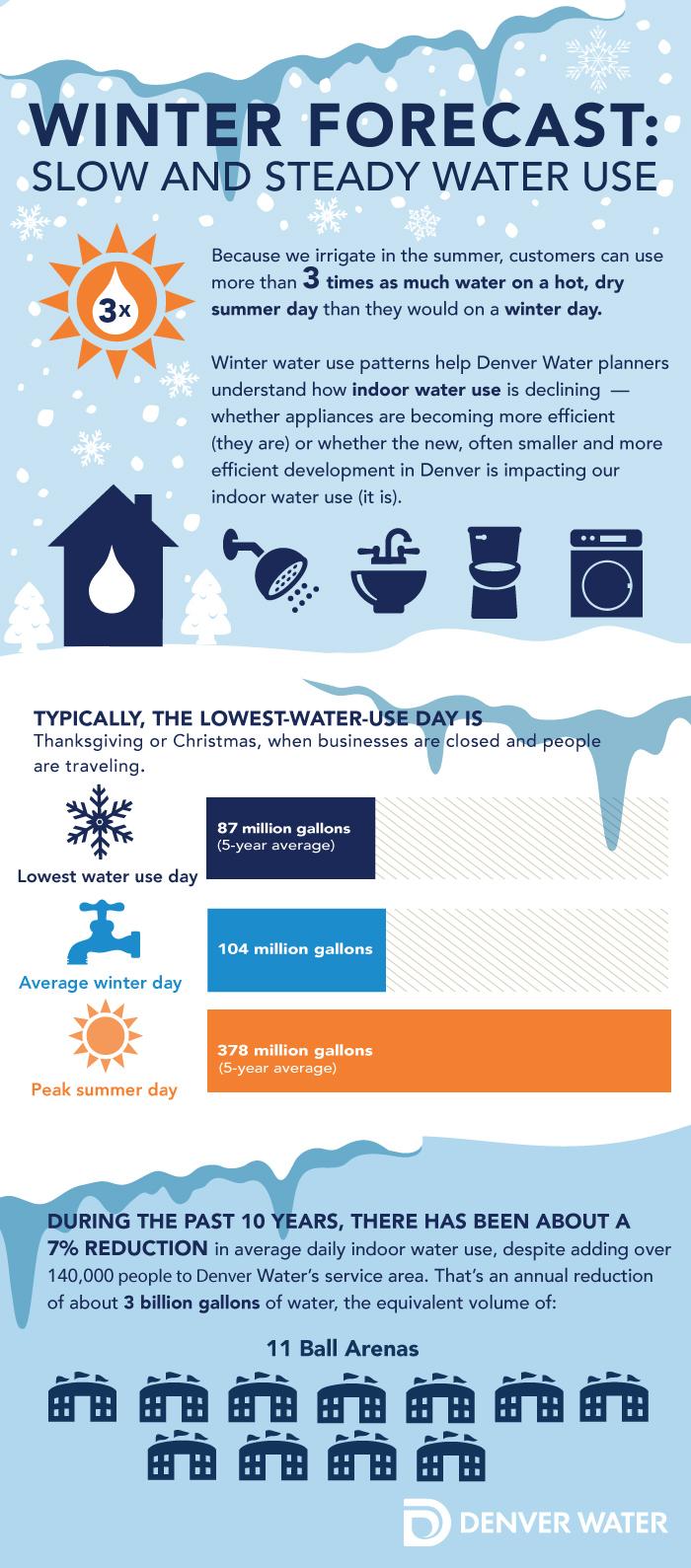What winter water use can tell us
Here at Denver Water, we can tell when the Broncos hit halftime without glancing up from our nachos.
That’s because everyone in town flushes the toilet at once.
When people stop irrigating in the winter, customers use water mainly indoors. That usage becomes steady and predictable, allowing water operators to see slight variations in water use — even a halftime potty break — which translates into valuable baseline data.
Get water-saving tips by signing up for the free, weekly TAP email. (Scroll down to the light blue bar to add your email.)
That’s important, because as Denver Water looks to the future, planners need to understand how customers use water now and how that use might change moving forward.
Winter forecast: Slow and steady water use
The city keeps growing, but indoor water use is declining
The reduction in indoor water use during the past decade is in many ways thanks to you.
Customers have replaced old fixtures and appliances with efficient models, and they’ve been proactive about fixing leaks.
(Do you think you’re using water wisely indoors? Follow this easy-to-use guide to determine if you have any water waste in your home and become more efficient today.)
The reduction also is due to the way our service area is growing (new development is often smaller and built with efficient technology). As more new development occurs, efficiency gains come faster.
Winter is a great time to do some indoor water-saving maintenance
Upgrade appliances, toilets and fixtures with WaterSense ones (and get a rebate for doing so). Take a few minutes to find and fix leaks throughout your house.
Bonus! In most municipalities, your sewer rates are based on your winter water use. Lower your water bill during that time, and you’ll be rewarded with reduced sewer bills too.


